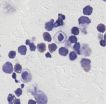(Press-News.org) Researchers at Yale School of Medicine have discovered a new drug compound that may help reverse the cognitive deficits of Alzheimer's disease. Their findings are publishing on August 5 in the open access journal PLOS Biology.
The compound, TC-2153, inhibits the negative effects of a protein called STriatal-Enriched tyrosine Phosphatase (STEP), which is key to regulating learning and memory. These cognitive functions are impaired in Alzheimer's.
"Decreasing STEP levels reversed the effects of Alzheimer's disease in mice," said lead author Paul Lombroso, M.D., professor in the Yale Child Study Center and in the Departments of Neurobiology and Psychiatry at Yale School of Medicine.
Lombroso and co-authors studied thousands of small molecules, searching for those that would inhibit STEP activity. Once identified, those STEP-inhibiting compounds were tested in brain cells to examine how effectively they could halt the effects of STEP. They examined the most promising compound in a mouse model of Alzheimer's disease, and found a reversal of deficits in several cognitive exercises that gauged the animals' ability to remember previously seen objects.
High levels of STEP proteins keep synapses in the brain from strengthening. Synaptic strengthening is a process that is required for people to turn short-term memories into long-term memories. When STEP is elevated in the brain, it depletes receptors from synaptic sites, and inactivates other proteins that are necessary for proper cognitive function. This disruption can result in Alzheimer's disease or a number of neuropsychiatric and neurodegenerative disorders, all marked by cognitive deficits.
"The small molecule inhibitor is the result of a five-year collaborative effort to search for STEP inhibitors," said Lombroso. "A single dose of the drug results in improved cognitive function in mice. Animals treated with TC compound were indistinguishable from a control group in several cognitive tasks."
The team is currently testing the TC compound in other animals with cognitive defects, including rats and non-human primates. "These studies will determine whether the compound can improve cognitive deficits in other animal models," said Lombroso. "Successful results will bring us a step closer to testing a drug that improves cognition in humans."
INFORMATION:
Please mention PLOS Biology as the source for this article and include the links below in your coverage to take readers to the online, open access articles
All works published in PLOS Biology are open access, which means that everything is immediately and freely available. Use this URL in your coverage to provide readers access to the paper upon publication:
http://www.plosbiology.org/article/info:doi/10.1371/journal.pbio.1001923
Contact:
Karen N. Peart
Senior Communications Officer
Yale School of Medicine
203-432-1326 or karen.peart@yale.edu
Citation: Xu J, Chatterjee M, Baguley TD, Brouillette J, Kurup P, et al. (2014) Inhibitor of the Tyrosine Phosphatase STEP Reverses Cognitive Deficits in a Mouse Model of Alzheimer's Disease. PLoS Biol 12(8): e1001923. doi:10.1371/journal.pbio.1001923
Funding: The American Health Assistance Foundation (PJL), the Alzheimer's Drug Discovery Foundation (MG, PJL), NIH grants MH091037 and MH52711 (PJL), NS04933901 (GDC and MAG), DA024860 (GMA), MH095532 (LT), GM054051 (JAE), AG047781 (PG), and the Yale/NIDA Neuroproteomics Center (P30 DA018343) funded the work. The funders had no role in study design, data collection and analysis, decision to publish, or preparation of the manuscript.
Competing Interests: The authors declare that they have no competing interests END
In search for Alzheimer's drug, a major STEP forward
2014-08-05
ELSE PRESS RELEASES FROM THIS DATE:
Pyruvate oxidation is critical determinant of pancreatic islet number and β-cell mass
2014-08-05
Researchers at the University at Buffalo, led by Dr. Mulchand Patel and also at Lawson Health Research Institute and Western Ontario, London, Canada, led by Dr. David Hill, collaboratively evaluated the role of the mitochondrial multienzyme pyruvate dehydrogenase complex in the regulation of pancreatic β-cell development and maturation in the immediate postnatal period in mice. This study, reported in the August 2014 issue of Experimental Biology and Medicine, demonstrated that the pyruvate dehydrogenase complex is not only required for insulin gene expression and ...
Butterflies change wing color in new Yale research
2014-08-05
Yale University scientists have chosen the most fleeting of mediums for their groundbreaking work on biomimicry: They've changed the color of butterfly wings.
In so doing, they produced the first structural color change in an animal by influencing evolution. The discovery may have implications for physicists and engineers trying to use evolutionary principles in the design of new materials and devices.
The research appears this week in the journal Proceedings of the National Academy of Sciences.
"What we did was to imagine a new target color for the wings of a butterfly, ...
Seamless gene correction of beta-thalassemia mutations in patient-specific cells
2014-08-05
August 5, 2014 – A major hurdle in gene therapy is the efficient integration of a corrected gene into a patient's genome without mutating off-target sites. In a paper published today in Genome Research, scientists have used CRISPR/Cas genome editing technology to seamlessly and efficiently correct disease-causing mutations in cells from patients with β-thalassemia.
β-thalassemia results from inherited DNA mutations in the hemoglobin beta (HBB) gene, resulting in reduced HBB expression in red blood cells and, in the most severe forms, anemia. The only established ...
NASA sees Tropical Storm Julio as part of a heated Eastern Pacific
2014-08-05
The Eastern Pacific Ocean has been warm this springtime, and those warmer waters have contributed to the development of storms like Tropical Storm Julio and Hurricane Iselle.
"Ocean temperatures in the Eastern Tropical Pacific were heated up because of the strong Kelvin wave activity this spring. Although the initial excitement of an impending El Nino has quieted down, these warmer waters have caused an early and active hurricane season," said Bill Patzert, Climatologist at NASA's Jet Propulsion Laboratory in Pasadena, California.
"Kelvin waves" are massive ripples ...
Grizzly research offers surprising insights into diabetes-obesity link
2014-08-05
While diabetes rates are on the rise and are having serious effects on millions of people's health, researchers studying grizzly bears have now discovered a natural state of diabetes that serves a real biological purpose and is also reversible. Investigators reporting in the August 5 issue of the Cell Press journal Cell Metabolism note that grizzly bears are obese but not diabetic in the fall, become diabetic only weeks later in hibernation, and then somehow become "cured" of diabetes when they wake up in the spring. The research reveals how natural biology, through evolutionary ...
No apparent link between sleep apnea and cancer: Large study
2014-08-05
Obstructive sleep apnea, in which people stop breathing for short periods while sleeping, affects about 5% of Canadian adults aged 45 years or older and can negatively affect health. More than 1 in 5 adult Canadians have risk factors for sleep apnea such as being overweight, being male and having diabetes, chronic nasal congestion or other health conditions.
Studies have postulated that obstructive sleep apnea may be linked to cancer because of low levels of oxygen in the blood.
"There is a need for a sufficiently large cohort study with a long enough follow-up to allow ...
Common chemical in mothers may negatively affect the IQ of their unborn children
2014-08-05
(Boston) -- In some women abnormally high levels of a common and pervasive chemical may lead to adverse effects in their offspring. The study, published recently in the Journal of Clinical Endocrinology & Metabolism, is the first of its kind to shed light on the possible harmful side effects of perchlorate in mothers and their children.
Using data from the Controlled Antenatal Thyroid Study (CATS) cohort, researchers at Boston University School of Medicine (BUSM) and Cardiff University studied the effect of perchlorate, an environmental contaminant found in many foods ...
Story tips from the Department of Energy's Oak Ridge National Laboratory, August 2014
2014-08-05
To arrange for an interview with a researcher, please contact the Communications staff member identified at the end of each tip. For more information on ORNL and its research and development activities, please refer to one of our media contacts. If you have a general media-related question or comment, you can send it to news@ornl.gov.
MATERIALS – Transparent ballistic results …
Glass used for military vehicle windshields is being put to the test by an Oak Ridge National Laboratory team evaluating different formulations for mechanical strength, high pressure and shock ...
NASA sees bursts of thunderstorms in Tropical Depression Genevieve's center
2014-08-05
The AIRS instrument aboard NASA's Aqua satellite provided a look at what's happening under Tropical Depression Genevieve's clouds using infrared light, and it appears that thunderstorms are bubbling up again.
A false-colored infrared image created at NASA's Jet Propulsion Laboratory in Pasadena California used data from the Atmospheric Infrared Sounder (AIRS) instrument that flies aboard NASA's Aqua satellite. The AIRS data showed powerful thunderstorms re-developed around Genevieve's center on August 5 at 8:35 a.m. EDT. That's an indication that there's some punch left ...
3-in-1 optical skin cancer probe
2014-08-05
WASHINGTON, D.C., August 5, 2014 – As thousands of vacationers hit the beach this summer, many of them will expose their unprotected bare limbs to direct UV sunlight, potentially putting them at risk of skin cancer later in life. To fight back, scientists can also turn to light, designing optical devices that may detect cancerous skin lesions early on, leading to better treatment outcomes and ultimately saving lives.
Researchers from the University of Texas at Austin's Cockrell School of Engineering have now developed a probe that combines into one device three unique ...





